After a scenic six-hour drive along the West African coast, tracing the Gulf of Guinea from Accra, I finally arrived in Cape Coast, Ghana! Come along with me as I try some incredible African street food and tour a UNESCO slave castle in Cape Coast, Ghana!
Cape Coast was an extremely important town during colonial times. The Dutch, Swedes, British, and Portuguese all settled this area. Cape Coast also has a very dark history, as it played a crucial role during the Trans-Atlantic Slave Trade.
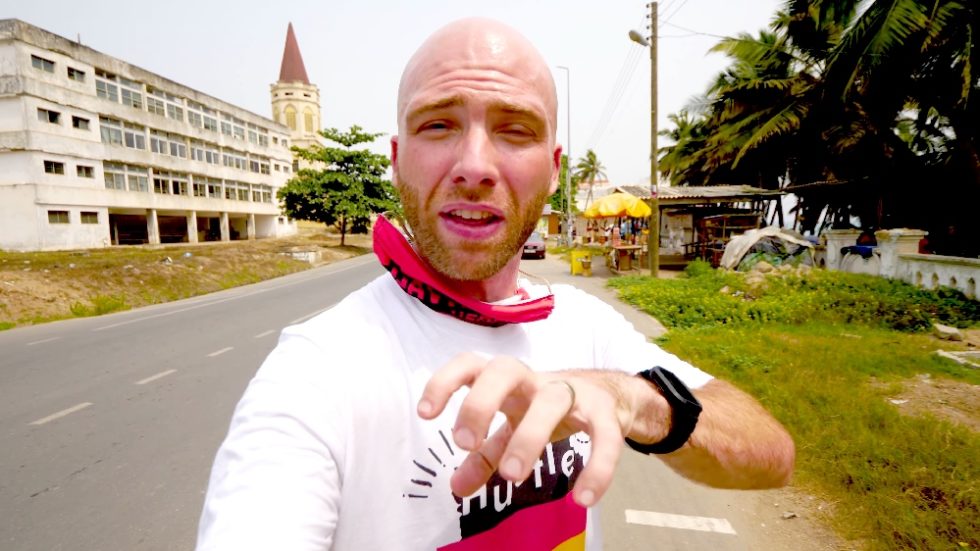
My afternoon began with a walk to Emma Locals Chop Bar with my guide Isaac from Jolinaiko Eco Tours for some lunch and lemon juice. I couldn’t wait to have some fufu, fava beans, goat, and fish and some filling meal!
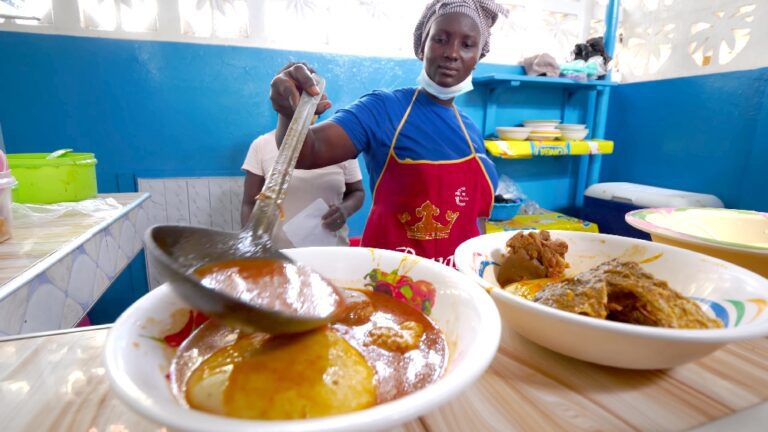
I washed my hands well and dug into the African street foods fufu, which is boiled and fried plantains and cassava flour.
It’s served in a light, red, gingery soup with goat and tuna. The fufu is pasty and doughy and pairs so well with the meat. But it was still scorching hot!

They gave me tons of goat meat, which was super flavorful. The massive chunks of goat were outstanding but it was hard to eat them with my fingers because the meat and soup was still steaming hot!

The tuna contained lots of bones, so I had to pick them out. Ever since I got a fish bone stuck in my throat when I was younger, I’ve been extra cautious!
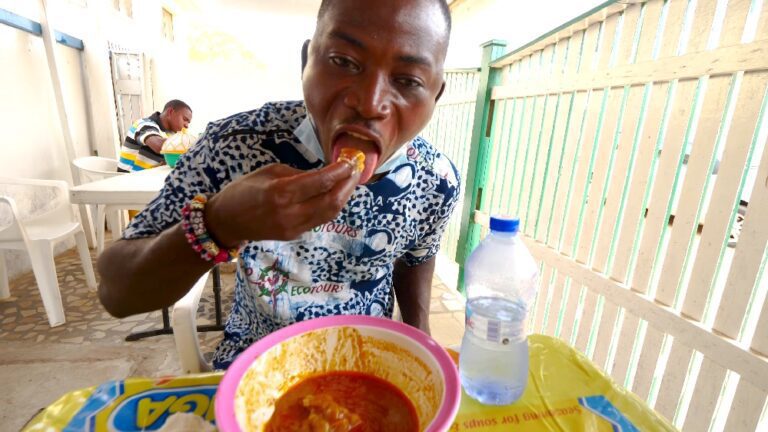
That said, the soup was really enjoyable, though! The bone marrow in the goat bones was the best part. I always love sucking the marrow out. It’s so full of flavor! This soup and fufu are one local dish you must eat street food when you come to Ghana!

It cost 86 cedi total for four bowls. I tipped another 14, for about $20 USD total.
Then, my guides and I drove through Cape Coast. They have two forts in town. On our way to the castle, we checked out the mini-market, where they were selling lots of fish, squid, rice, and egg stew.

We continued on to the fishing village. There were tons of fishing boats everywhere and fishermen coming in with their catch. More than 98% of the people in town engage in fishing-related activities! At the other end of the beach was Cape Coast Castle.

We entered the castle through the Door of No Return, which is where enslaved Africans went through and never returned from during the slave trade.
Above the door is a sign that says “Door of Return,” symbolically welcoming descendants of slaves, who were affected by the brutal transatlantic slave trade, back home to west africa.
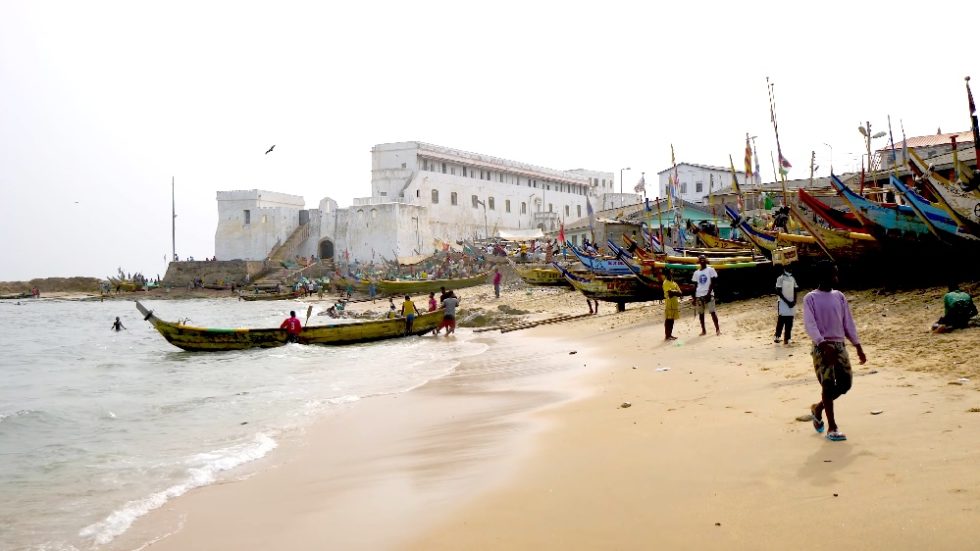
The castle was built by the English around 1665. From the walls, I could see restaurants along the beach. Above us was the governor’s residence. It was a large, mansion-like tower in the castle with lots of windows.
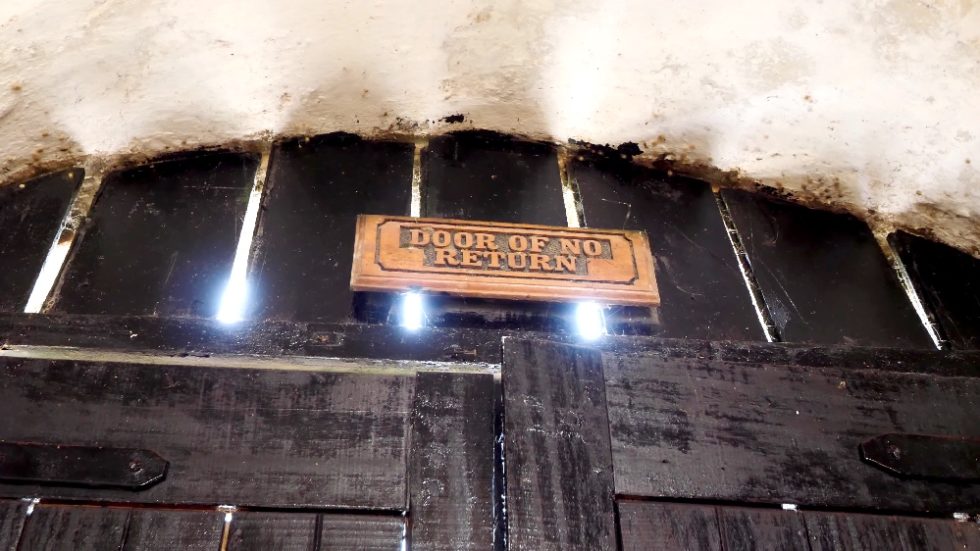
Then, we headed down to the slave dungeons. The castle has male and female slave dungeons. They’ve been left in the same condition since the last time they were used.
At any point during its use, at least 1,000 enslaved Africans were held in them. They were held for 2 weeks minimum, 6 weeks on average, and 12 weeks maximum.
Lights have been put up in the dungeons, but back then, they were pitch-black. The men and women were led through the dungeons to the Door of No Return. Even now, the bricks on the floor are no longer visible because they were covered in bodily fluids.
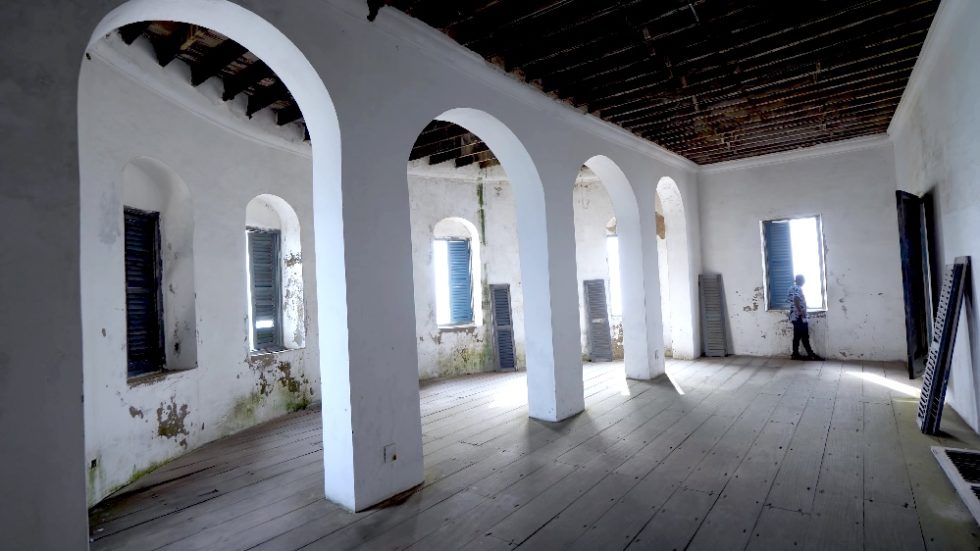
Above the male dungeon was a church. On its wall is a plaque unveiled by President Barack Obama and First Lady Michelle Obama commemorating their visit to the castle on July 11, 2009.
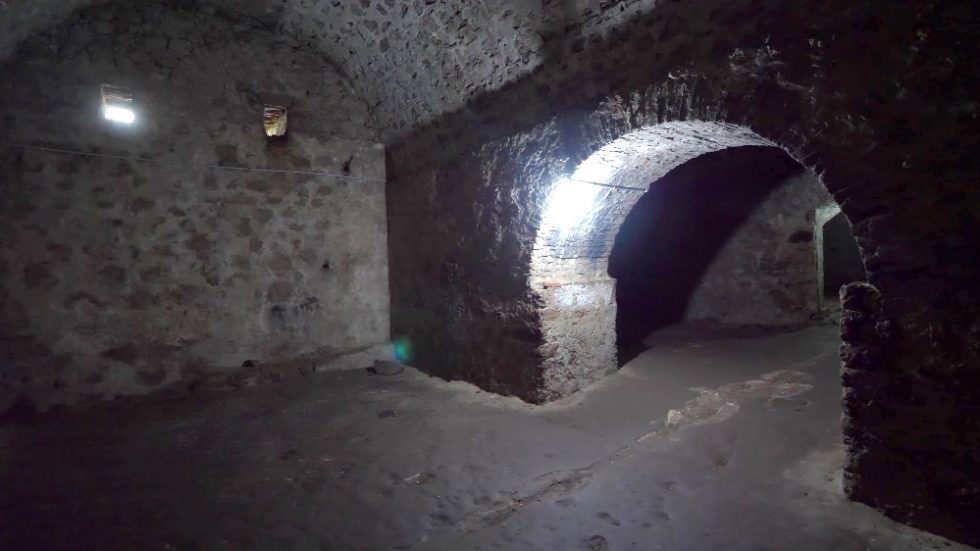
Nearby is a condemned cell, and on the west side of the castle are 16 cannons and a stack of cannonballs. There are also chambers where the officers would hold slaves they wanted to rape until the slave changed her mind.

Finally, I visited the female slave dungeons. They held between 200-250 women in each session. If an officer wanted one of the female slaves, they would take her to the ocean and bathe her.
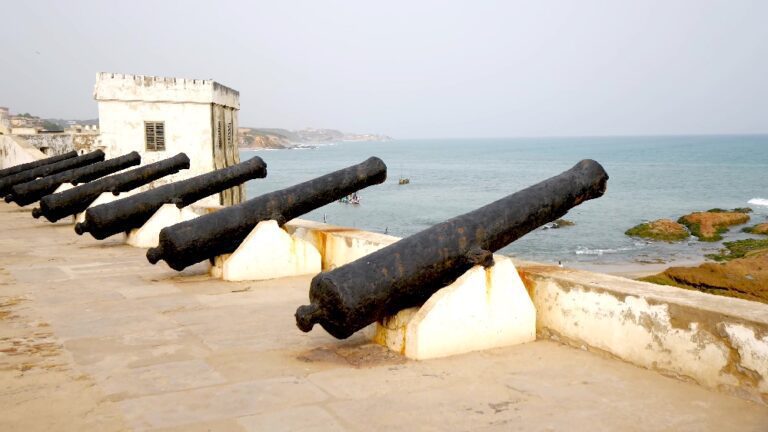
Afterward, they would either take her back to the dungeon or she may become his concubine and bear him children. These women would then be given European names.
Between the popular street food and the slave castle tour, this adventure in Ghana was a mix of emotions. I’ve never visited a place with such a sad history but I highly recommend it to everyone visiting Ghana.
Big thanks to my friends at Jolinaiko Eco Tours for bringing me to Cape Coast Castle and to the Golden Hill Parker Hotel in Elmina Castle for hosting me.

I hope you liked coming with me to have popular african street food and seeing this important UNESCO slave castle in Ghana. If you did, please give this video a thumbs up and leave a comment below.
Also, please subscribe to my YouTube channel and click the notification bell so you don’t miss any of my travel/food adventures around the world.
Counter
101 Countries • 1432 Cities